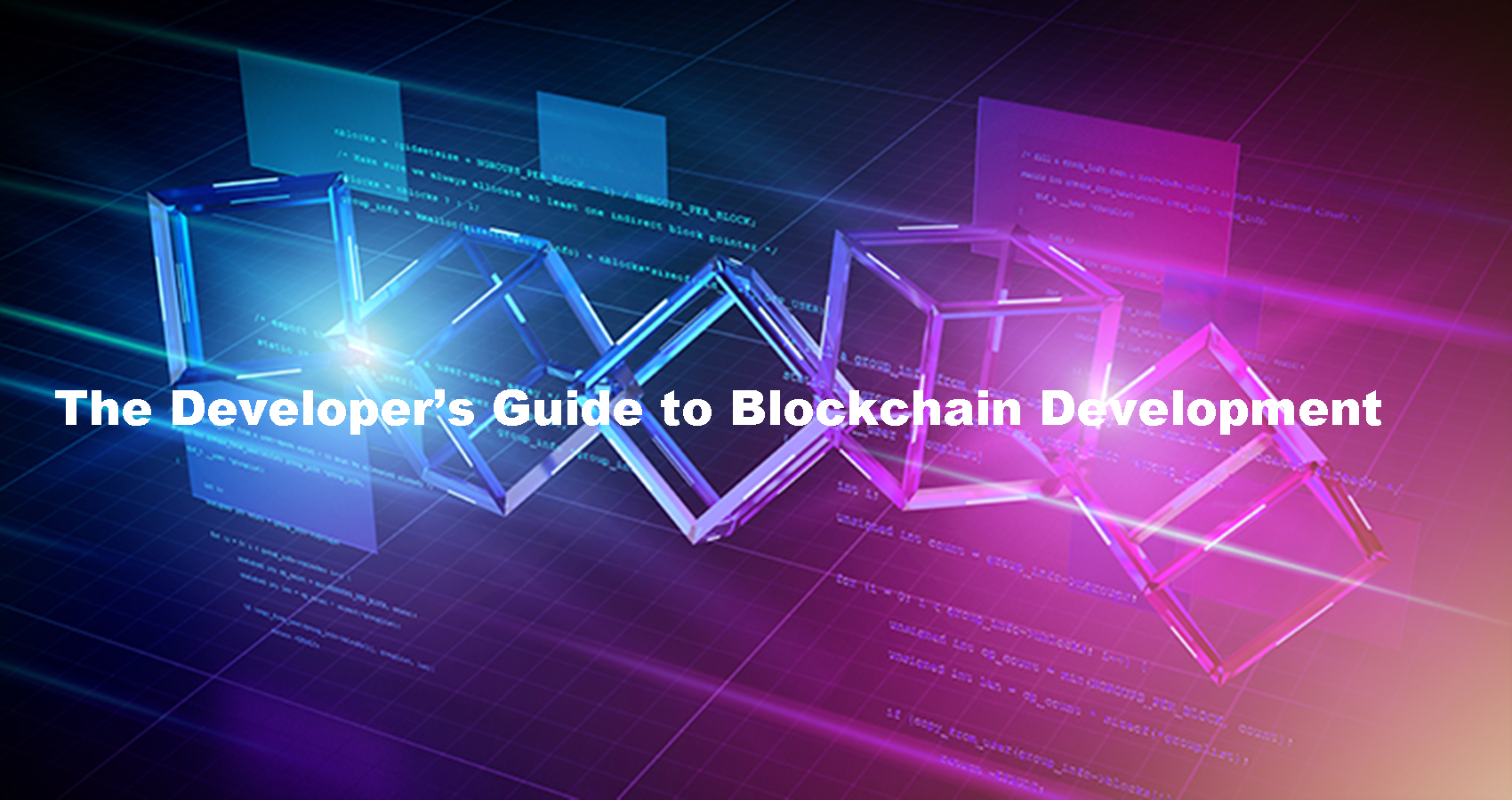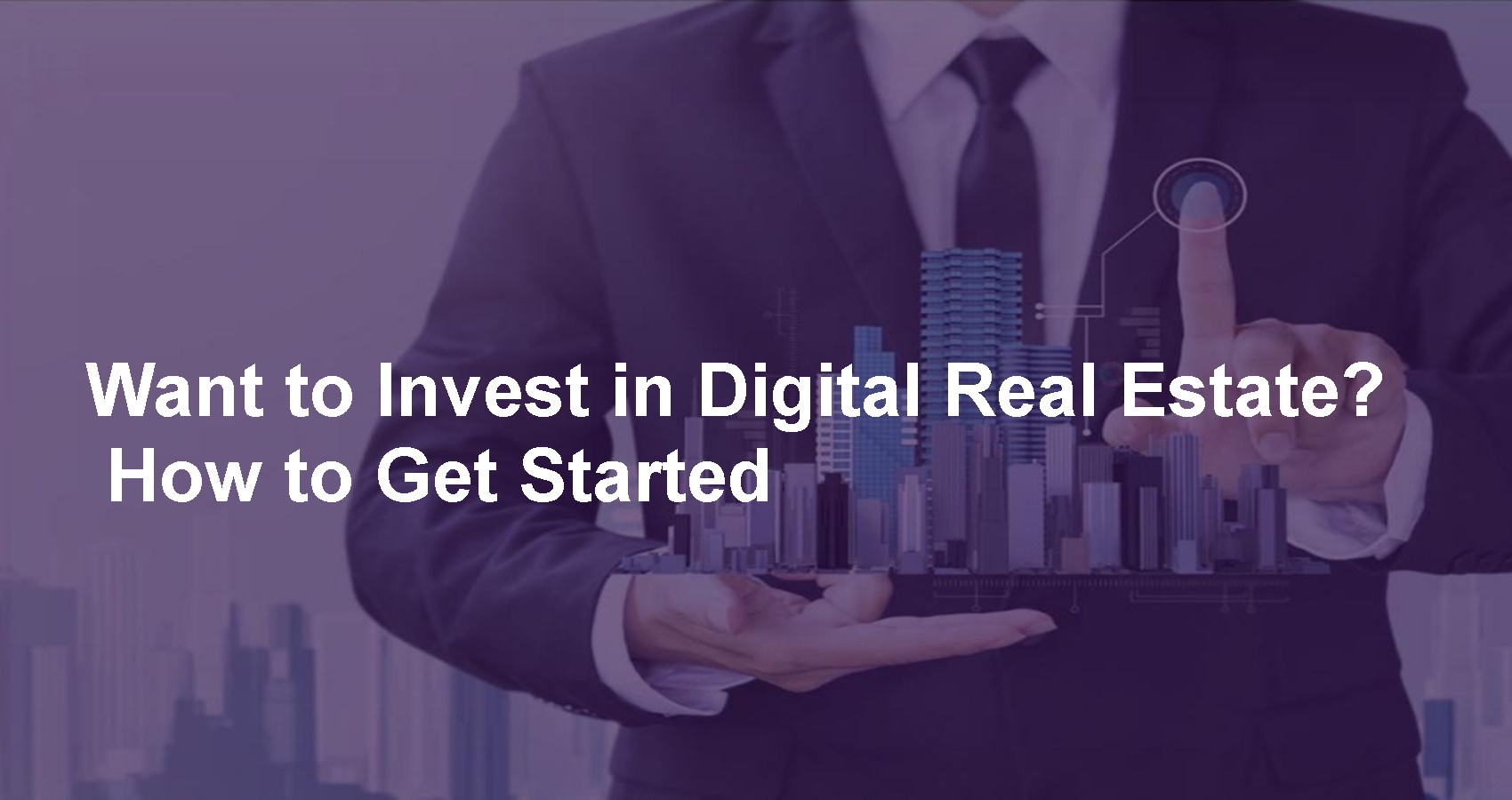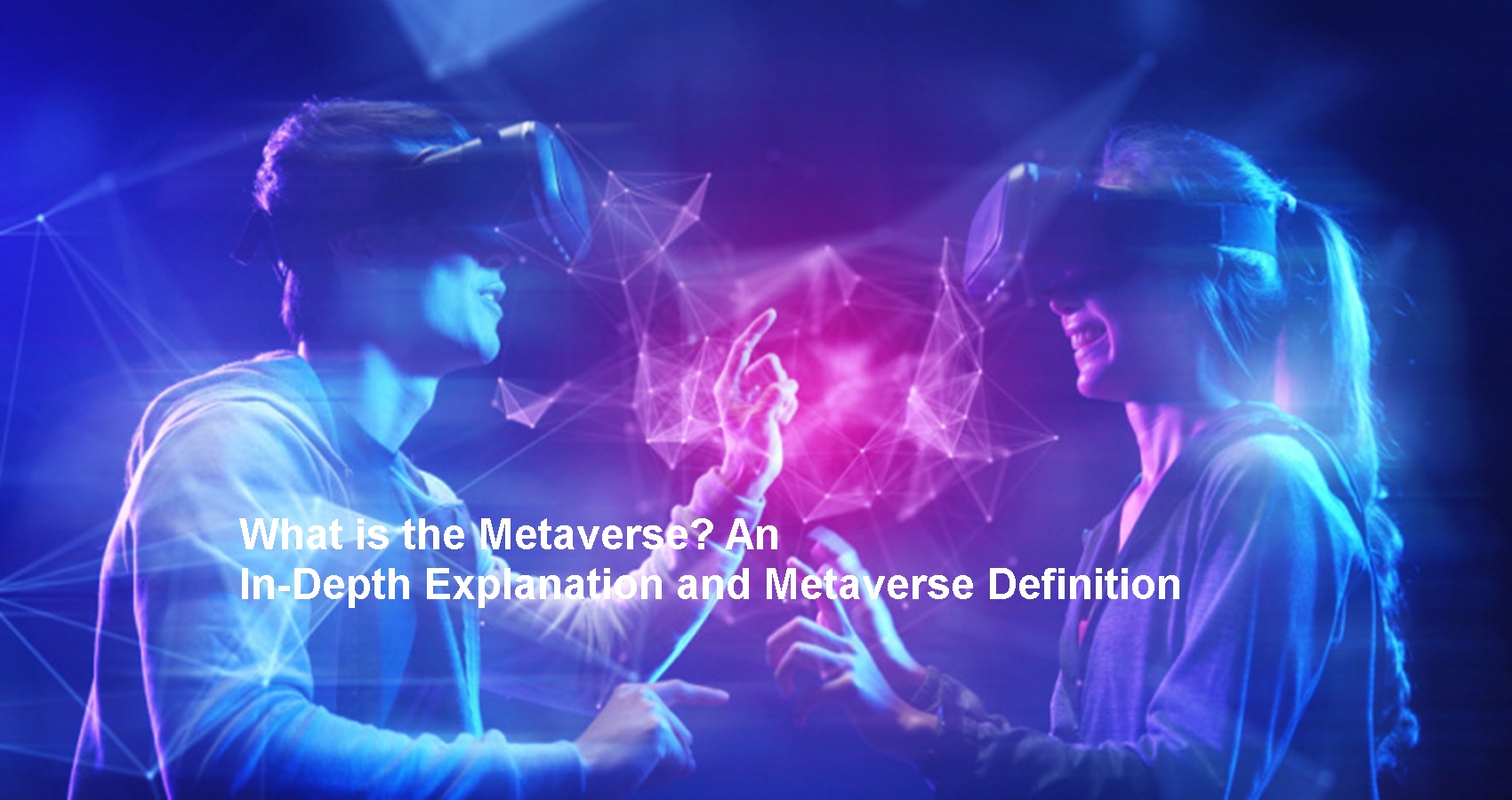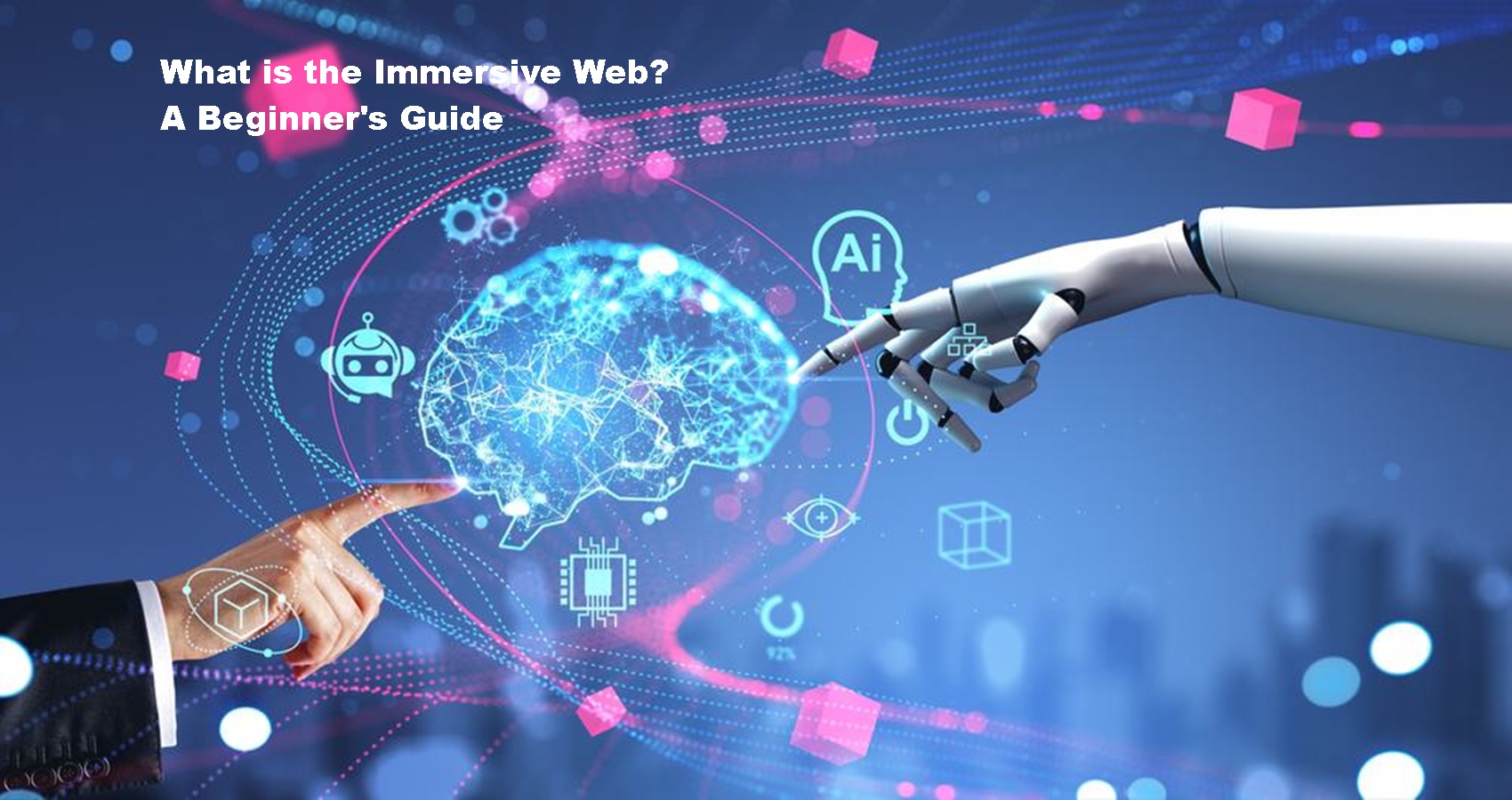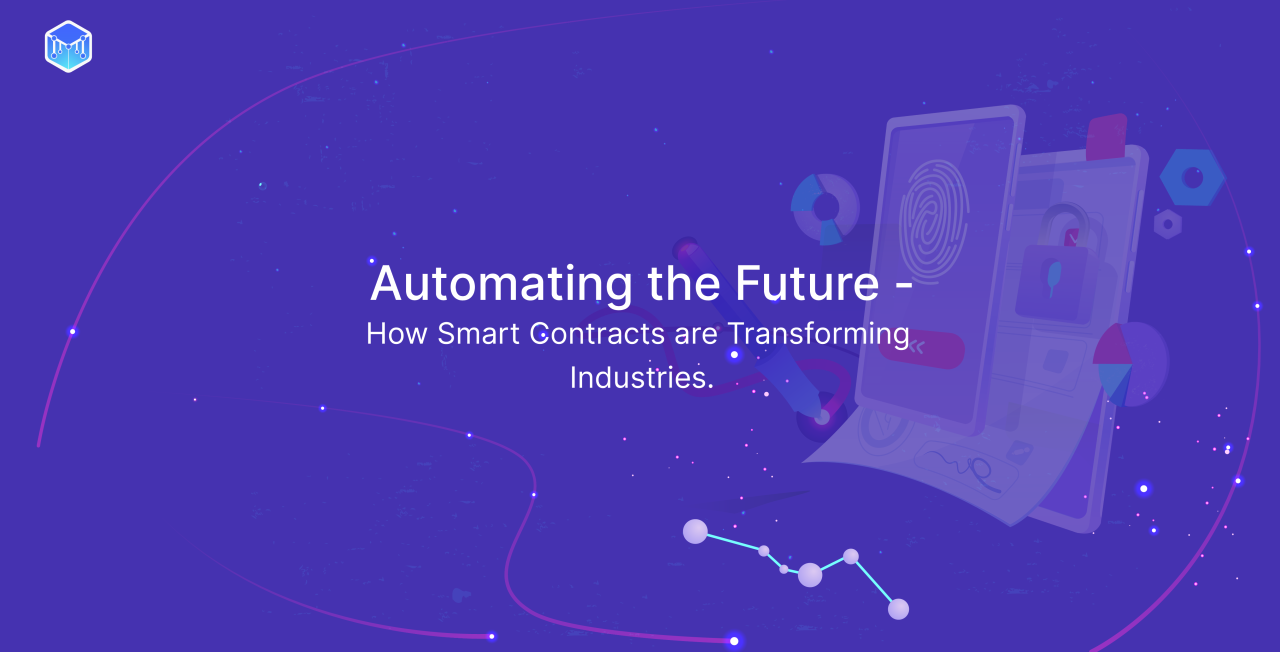Blockchain technology presents immense opportunities for developers to build the next generation of decentralized applications and platforms. But getting started with blockchain development can seem daunting given the new languages, frameworks, and concepts involved. This comprehensive guide aims to provide developers with everything they need to start building blockchain-based products. We’ll cover: Whether you’re a software engineer looking to skill up or a complete beginner, this guide will give you a solid foundation to start creating the future of the open web powered by blockchain. Let’s get started! What is Blockchain? A Primer for Developers Before diving into the code, it helps to level set on what blockchain actually is under the hood. Here is a quick rundown of blockchain and its core technical components: Some key attributes that make blockchain technology uniquely powerful: Now that you have the big picture on how blockchains function from a technical perspective, let’s dive into the developer tools and ecosystems to start building. Learning Solidity: The Language of Ethereum Smart Contracts The most popular blockchain for developers is Ethereum because of its maturity, extensive documentation, and vast ecosystem. To build decentralized apps (DApps) on Ethereum, the main programming language you’ll need to learn is Solidity. Here’s a quick primer on Solidity: Now let’s walk through some recommended resources to get started with Solidity: Through a combination of reading documentation, completing interactive tutorials, and watching video overviews, any developer can go from zero to proficient in Solidity. Blockchain Development Frameworks While base languages like Solidity are essential, developers also utilize key frameworks, libraries, and tools to streamline blockchain programming: Truffle Ganache Web3.js OpenZeppelin Through frameworks like these, blockchain programmers can reduce time spent on common tasks like setup, compilation, and testing. They provide building blocks developers can trust to speed up development. Learning Blockchain Coding With Python While Solidity excels for writing Ethereum smart contracts themselves, the Python programming language has also emerged as popular choice for broader blockchain development thanks to its simplicity and versatility: Here are the best resources for getting started with Python blockchain programming: Python’s extensive libraries along with its fast prototyping abilities make it a versatile choice for all aspects of blockchain application development. Top Developer Resources for Blockchain Projects Beyond languages and frameworks, blockchain developers need access to documentation, data, APIs, tools, and communities. Here are the best blockchain developer resources: Documentation Data Community Leveraging these documentation portals, data analytics services, APIs, and community groups will support your success as a blockchain engineer. Best Practices for Secure Smart Contract Development With billions of dollars worth of crypto now managed by smart contracts, writing secure and bug-free code is critical. Here are 10 best practices to boost smart contract security: Adopting security fundamentals like threat modeling, input validation, and rigorous testing is critical for blockchain code on the forefront of managing valuable digital assets. Tips for Developing Efficient Blockchain Architectures Beyond coding smart contracts themselves, developers have to make many architectural decisions when engineering robust blockchain applications: By combining best practices like separation of concerns, microservices, and off-chain data management, developers can craft optimized blockchain architectures. Career Opportunities for Blockchain Developers Blockchain development skills are in extremely high demand, with software engineers among the most sought after professionals in the space. Here are some of the top career pathways: With skyrocketing adoption, blockchain developers can expect to earn top salaries while working on groundbreaking projects. Whether interested in fintech, culture, governance, or human coordination, blockchains present the opportunity to make an impact. Conclusion This guide just scratched the surface of the skills and knowledge required to become an effective blockchain developer. But learning Solidity, Python, foundational frameworks, architecture patterns, security principles, and emerging best practices will put you lightyears ahead. Blockchain technology offers the potential to rearchitect not just money but the internet itself on the basis of decentralization, transparency, and user empowerment. There is so much yet to be invented. For developers, being a part of building this future promises exciting challenges and rewarding career opportunities. I hope this guide inspired you to start tinkering and learning hands-on about blockchain application development. The decentralized future needs a new generation of developers ready to bring it to life.
Want to Invest in Digital Real Estate? How to Get Started
Digital real estate composed of virtual land parcels and properties, represents an emerging asset class allowing you to invest in the metaverse and crypto worlds. Platforms like Decentraland and The Sandbox enable users to buy, develop, and monetize virtual real estate NFTs. This generates new streams of passive income and wealth creation opportunities through digital properties. In this comprehensive guide, we’ll cover everything you need to know to get started investing in this new digital frontier including: Whether you’re an experienced crypto investor or completely new to blockchain assets, this guide will equip you with the knowledge to confidently invest in the burgeoning realm of open metaverse virtual real estate. What is Digital Real Estate? Digital real estate refers to virtual land and properties that exist within metaverse and game worlds built on blockchain technology. Just like physical real estate, these virtual assets can be bought, sold, developed, rented, and traded. Some key characteristics of digital real estate include: Digital real estate represents a new application of blockchain technology and an entire alternative asset class emerging in the metaverse. While still early stage, virtual real estate is projected to reach $1 trillion in annual transactions within the next decade. Now let’s walk through the process of actually getting started investing in metaverse and blockchain virtual real estate. How To Invest in Digital Real Estate in 5 Steps Here are the key steps for making your first virtual land investment: Step 1: Choose a Metaverse Platform The first decision is choosing which metaverse or blockchain game world you want to purchase digital land in. Some of the top options include: Each metaverse platform has its own art style, community, toolsets, and ecosystems. Do research to decide which virtual world aligns closest with your goals as a digital land owner. Step 2: Set Up a Cryptocurrency Wallet To purchase digital land and other blockchain assets, you’ll need to set up a crypto wallet. Metamask and Coinbase Wallet are two popular options. Make sure to securely record your wallet seed phrase to access your holdings. Fund your wallet with ETH which is the primary payment currency used across many metaverse platforms. Step 3: Browse Marketplaces for Land Parcels Once you’ve chosen a metaverse and set up a wallet, you can start exploring marketplaces where virtual land is bought and sold: Evaluate lands based on size, proximity to high traffic areas, neighboring scenes, and current bid prices. Prime parcels in central districts are most scarce and valuable. Step 4: Purchase Your Land Once you’ve identified a land parcel you want to purchase, follow the buying process: Holding land ownership is tied to holding its corresponding NFT in your crypto wallet. Step 5: Develop or Monetize Your Land As a digital land owner, you now have options to build experiences or generate yields: The opportunities to build income streams and digital assets on virtual land are just getting started. And that covers the basics of investing in blockchain-based digital real estate! Now let’s go deeper on key strategic considerations. 5 Digital Real Estate Investment Strategies Approaching metaverse real estate with clear strategy is vital to succeed as the market matures. Here are 5 recommended investment strategies: 1. Focus on Established Metaverse Platforms Targeting development-rich platforms like Decentraland and Sandbox with larger user bases can expose your land to more potential renters and buyers. Prioritize longevity and community over hype. 2. Buy Land Near High Traffic Areas Digital land plots located in central districts or next to popular gaming scenes, virtual events, and attractions garner more visitors. Benefit from adjacencies to existing development. 3. Develop Revenue-Generating Assets Constructing art galleries, amusement parks, event venues and other immersive scenes on your land creates opportunities to charge access fees, rent space to other users, or attract sponsorship revenue. 4. Look for Undervalued Lands Find lands with potential like waterfront access or space for expansions which are currently undervalued relative to future development upside. Be patient for value to increase. 5. Balance Risk With Multiple Platforms Consider owning smaller land parcels across several metaverse platforms to diversify. This provides exposure to multiple growing communities without over concentrating risk into a single world. As with physical real estate investing, conducting thorough research, thinking long-term, and diversifying are key principles for digital real estate success too. Top 5 Digital Real Estate Marketplaces While each metaverse platform has its own internal land marketplaces, here are 5 of the top open NFT marketplaces for discovering and buying digital real estate across multiple worlds: Here are the key steps for making your first virtual land investment: Step 1: Choose a Metaverse Platform The first decision is choosing which metaverse or blockchain game world you want to purchase digital land in. Some of the top options include: Each metaverse platform has its own art style, community, toolsets, and ecosystems. Do research to decide which virtual world aligns closest with your goals as a digital land owner. Step 2: Set Up a Cryptocurrency Wallet To purchase digital land and other blockchain assets, you’ll need to set up a crypto wallet. Metamask and Coinbase Wallet are two popular options. Make sure to securely record your wallet seed phrase to access your holdings. Fund your wallet with ETH which is the primary payment currency used across many metaverse platforms. Step 3: Browse Marketplaces for Land Parcels Once you’ve chosen a metaverse and set up a wallet, you can start exploring marketplaces where virtual land is bought and sold: Evaluate lands based on size, proximity to high traffic areas, neighboring scenes, and current bid prices. Prime parcels in central districts are most scarce and valuable. Step 4: Purchase Your Land Once you’ve identified a land parcel you want to purchase, follow the buying process: Holding land ownership is tied to holding its corresponding NFT in your crypto wallet. Step 5: Develop or Monetize Your Land As a digital land owner, you now have options to build experiences or generate yields: The opportunities to build income streams and digital
Blockchain Real Estate: How To Invest, Best Platforms, & Fees
Blockchain technology is disrupting the real estate industry in major ways. From fractional property investments to automated transactions, blockchain-based platforms are opening real estate investing to a wider pool of investors. In this comprehensive guide, we’ll explain everything you need to know about blockchain real estate investing, including: Whether you’re an experienced real estate investor or completely new to the blockchain world, this guide will equip you with the knowledge to navigate this emerging new asset class. Let’s dive in! How Blockchain Technology is Revolutionizing Real Estate Blockchain real estate investing represents a fusion between digital blockchain assets and physical real world properties. But how exactly is blockchain technology changing and benefiting real estate? Fractional Ownership One of the biggest values of blockchain for real estate is enabling fractional ownership of properties. Tokens represent digital ownership shares that can be purchased individually or in bundles. This opens up investment in high-value properties to smaller-scale investors rather than just institutional players. Now anyone can gain exposure to prime commercial or residential real estate from just a few hundred dollars. 24/7 Liquidity Investing in traditional real estate like REITS or rental properties is relatively illiquid – it can take months to cash out your position. In contrast, blockchain security tokens representing property ownership can be traded 24/7 on secondary exchanges just like cryptocurrencies. This brings unparalleled liquidity to real estate investment. Automated Compliance Smart contracts enable automated compliance and governance of blockchain real estate investments. Tasks like collecting and distributing rental income or voting on property management decisions can be handled programmatically to reduce manual work and errors. Property transactions and regulatory compliance are also streamlined through smart contract automation. Enhanced Transparency Storing property transactions and ownership data on public blockchains enables greater transparency compared to opaque closed databases used today. Having a single source of truth improves accountability, reporting, and auditing. Elimination of Middlemen Disintermediating gatekeeping middlemen in real estate transactions reduces fees and friction. For example, deals can close faster by automating escrow and title processes onto blockchain rails rather than relying on bureaucratic intermediary players. Accessibility Investing in blockchain real estate opens up asset exposure to global retail investors rather than just accredited or institutional players. Geographic restrictions that limited investment in prime property markets are removed through tokenization. The operational complexities of managing remote physical real estate are abstracted away. These benefits make real estate investing more efficient while expanding access and liquidity. Next let’s look at the process of actually investing in blockchain real estate assets. How To Invest in Blockchain Real Estate in 6 Steps Investing in tokenized real estate properties through blockchain platforms involves some nuances compared to buying traditional stocks or cryptocurrencies. Here is a step-by-step guide: 1. Choose a Real Estate Investment Platform First, you’ll need to select which blockchain real estate platform to invest through. We’ll profile some of the top options later in this guide. Key factors to evaluate include types of available properties, jurisdictions served, onboarding/KYC requirements, fees, secondary trading options, and security. 2. Create an Account and Get Verified Once you pick a platform, you’ll need to create an account and complete identity verification steps if required to comply with anti-money laundering (AML) and know your customer (KYC) regulations. Provide information like a government ID, proof of address, tax details, and proof of funds origins to get approved. 3. Fund Your Account Typically you’ll need to fund your account by transferring in a specified payment cryptocurrency like USDC or ETH. Follow the platform’s instructions to deposit funds from an external crypto wallet or exchange account into your new platform wallet. 4. Browse Investable Property Listings Now you can browse available property investments on the platform marketplace. Listings will provide details on the property type (residential, commercial, retail, etc), location, token price, expected returns, risk level, and other parameters to inform your decision. 5. Purchase Property Tokens Once you’ve identified a property you want to invest in, follow the steps to purchase governance and/or equity tokens connected to the property. This will involve signing transaction approvals through your wallet. Different token bundles offer various ownership rights and returns. 6. Manage or Sell Tokens After purchasing property tokens, you can choose to: And that’s the basic process for investing in fractionalized blockchain real estate assets! Now let’s look at some top platforms facilitating these investments. Top 7 Blockchain Real Estate Investment Platforms Dozens of blockchain real estate platforms now exist spanning property markets across the globe. Here are 7 of the most popular options: 1. RealT RealT focuses on tokenizing residential real estate like single family rentals to open up investment opportunities for retail buyers. It has facilitated over $100 million in property tokenizations thus far. RealT offers a straightforward investment experience through their site with blockchain asset custody provided by Uniswap. Locations: USA Asset Types: Single family homes Notable Features: Focused on smaller retail investors. Partners with experienced real estate asset managers. Secondary trading on Uniswap. 2. Liquid RE One of the longest running players in blockchain real estate, Liquid RE has tokenized over $20 million in global commercial properties to date. Their platform caters to accredited and institutional investors. Locations: Australia, Philippines, Japan, Cyprus Asset Types: Commercial, healthcare, hospitality, multifamily residential Notable Features: Caters to accredited investors. Properties jointly owned with corporate partner Propzy. Secondary trading on Uniswap. 3. RealT Platform RealT Platform focuses on tokenizing rental properties, starting with a portfolio of single family homes in Detroit. It utilizes Tezos blockchain. RealT Platform is operated by RealToken, one of the first platforms to pioneer real estate tokenization. Locations: USA Asset Types: Residential rentals Notable Features: Specializes in Detroit market. Leverages Tezos blockchain. Management by experienced Red Queen real estate operator. 4. Realio Realio offers an end-to-end solution for tokenizing assets using the Ethereum blockchain. Realio Network provides compliant issuance and lifecycle management of tokenized securities backed by real estate. Locations: Global Asset Types: Commercial, funds Notable Features: End-to-end issuance and management of tokenized assets. Partners with enterprise
What is the Metaverse? An In-Depth Explanation and Metaverse Definition
The metaverse is one of the most talked about emerging technologies right now. But what exactly is the metaverse and why is it generating so much buzz? In this in-depth article, we’ll provide a comprehensive overview of the metaverse, its key characteristics, potential use cases, and the technologies powering it. We’ll also look at the role immersive technologies like virtual reality, augmented reality, avatars, digital assets, and blockchain play in bringing the metaverse vision to life. A Simple Metaverse Definition At its most basic level, the metaverse can be defined as: A network of persistent, interactive, virtual 3D worlds tied together into a perceived virtual universe. The metaverse acts as a virtual layer built on top of the physical world that enhances real-life experiences with digital/virtual ones. The key principles of the metaverse include: This covers the basic parameters that define the metaverse and set it apart from previous technology revolutions. Next, we’ll dive deeper into the history behind the metaverse vision and the key technologies bringing it to life. The Origins of the Metaverse Concept The foundations for the metaverse vision we see today were laid decades ago by pioneering authors, technologists, and futurists. While the exact term “metaverse” is relatively new, its underpinnings draw inspiration from several key sources. Literary Origins The ideas behind the metaverse can be traced back to cyberpunk and dystopian sci-fi novels from the 1980s and 90s that depicted virtual worlds and virtual reality-driven societies. Some of the most influential works include: These seminal sci-fi works established the creative vision for shared 3D virtual spaces that foreshadowed many metaverse concepts. Early Virtual Worlds Alongside these literary influences, early virtual worlds and simulation technologies also provided inspiration for the current vision of the metaverse: These early shared virtual spaces laid the groundwork for the persistent 3D environments promised by the metaverse. Recent Tech Advances Recent advances in consumer virtual reality, augmented reality, blockchain, cloud computing, and graphics processing provide the technological foundations to realize the full vision of an immersive network of virtual worlds as envisaged by sci-fi authors. The release of affordable consumer VR headsets like the Oculus Rift and HTC Vive in 2016 brought modern virtual reality into the mainstream and provided a new level of immersion into digital worlds. Blockchain technology through cryptocurrencies like Bitcoin and smart contract platforms like Ethereum allows the creation of virtual economies and ownership of digital assets. Ubiquitous smartphone usage and AR capabilities provide mass access to digital overlays and experiences binding the virtual with the real world. Advances in graphics, simulation, and cloud computing allow the creation of expansive, persistent online worlds populated with millions of simultaneous users. With these foundations in place, the metaverse vision that has existed in speculative fiction for decades is now becoming an emerging reality. Leading technology companies like Meta (formerly Facebook), Microsoft, Nvidia, Unity, and Roblox are actively building the building blocks and platforms to power the early stages of the metaverse. But to truly understand the possibilities of the metaverse requires diving deeper into the constituent technologies driving its development. Key Technologies Powering the Metaverse The metaverse encompasses several key tech categories including virtual and augmented reality, digital identities, tokenized digital assets, decentralized finance, spatial computing, AI, and more. Let’s look at some of the most important technologies bringing the metaverse vision to life: Virtual Reality (VR) Fully immersive virtual reality facilitated by VR headsets is a foundational technology for the metaverse. VR allows users to inhabit digital worlds with an unparalleled sense of presence and immersion compared to other mediums. Interfaces like virtual reality gloves combining haptic feedback and motion tracking provide the ability to use one’s virtual hands naturally, further enhancing the sense of “being there”. Major consumer VR platforms today include the Meta Quest (formerly Oculus Quest), Valve Index, HTC Vive, and PlayStation VR. Over the coming decade, expect VR display resolution and field of view to increase substantially while form factors shrink. By providing an embodied perspective into digital worlds that engages human senses and perception, VR allows individuals to have meaningful virtual experiences together–whether exploring fantastic game worlds or interacting with others’ avatars in more social spaces. Augmented Reality (AR) While VR provides immersion into wholly virtual environments, augmented reality overlays digital content directly into your perceptions of the physical real world. AR will be a critical technology for integrating virtual metaverse experiences into everyday life. Simple AR applications today run on smartphones and tablets, but in the future AR functionality will be integrated into smart glasses providing persistent overlays onto the world around you. Imagine walking down a city street populated with a layer of virtual objects and interfaces visible only through your AR device. This fusing of the virtual and real will make the metaverse a more seamless extension of the physical world. AR technologies will help extend metaverse interactions into real world spaces and experiences. Avatars Avatars represent a user’s virtual identity in the metaverse. They reflect your personality and preferences through visual appearance, attire, accessories, and customizable digital assets. Well-designed avatars instill a greater sense of “presence” or feeling of actually inhabiting the virtual environment. Realistic metaverse avatars feature full body tracking so your virtual motions mirror your real ones. Your avatar provides the main lens through which you experience and interact in the metaverse, from casual social experiences to live events and games. Avatars will become increasingly detailed over time with realistic facial expressions and non-verbal communication captured through sensors. Your avatar may even be generated via 3D scans of your actual face and body. But avatar representation in the metaverse can also take stylistic, fantasy-based creative directions. Digital Assets Digital assets are visual content and items that exist natively in the virtual world of the metaverse. Examples include virtual clothing, accessories, avatar features, real estate, artwork, and more. These digital-only assets represent a significant area of innovation and growth in the metaverse. What makes metaverse assets unique compared to current digital items like in-game skins and cosmetics
What is the Immersive Web? A Beginner’s Guide
As virtual and augmented reality gain traction, a new vision of the web is emerging—one where we can browse immersive 3D content through ambient computing devices. This concept of an immersive web promises to transform how we engage with information, educate, socialize, and play. In this comprehensive beginner’s guide, we examine: Let’s dive in and understand what’s driving the evolution of this next paradigm for human-computer interaction on the internet. What is the Immersive Web? The immersive web refers to browsing experiences where 3D environments, objects, and information surround users in digital space. It aims to make interacting with the web feel as natural as the real world through technologies like: Together these allow information and experiences from the web to integrate seamlessly into our perceptions and surroundings – creating a highly interactive and visually engrossing blend of atoms and bits. Key Attributes of the Immersive Web The immersive web as a concept is characterized by several key attributes: Natural Interfaces – Hands-free controls, voice, eye-tracking, haptics, and other organic inputs replace mouse and touchscreens. TOTAL The keyword density of the target phrase “how to enter metaverse” is 0.6% (mentioned twice). The keyword density of the target phrase “how to join metaverse” is 0.3% (mentioned once). The keyword density of the target phrase “how to get into metaverse” is 0.3% (mentioned once). The keyword density of the target phrase “metaverse login” is 0% (not mentioned). The total keyword density of the target phrases is 1.2%. Persistent Digital Assets – 3D objects, buildings, characters and scenes exist continuously as persistent digital assets rather than temporary renders. Multi-Sensory Experiences – Visuals, audio, touch, smell, taste combine for rich perception of digital content and interaction. Presence – The sense of feeling truly present with others thousands of miles away by being together in a shared simulated world. Interoperability – Moving seamlessly across apps, sites, and virtual worlds with persistent identity and digital possessions. Augmented Reality – Fluid blending of contextual digital information into the physical environment. Digitally Extended Senses – Sensing and visualizing data beyond normal human perception through spatial computing. Intuition – Information organized spatially allowing absorption based on intuition rather than symbolic reasoning. Empathy – Deepened emotional connections and understanding through lifelike avatars, environments, and shared experiences. These capabilities create web experiences that feel real, immersive, and integrated into our lives and surroundings – transcending the limitations of screens, apps, and inputs devices today. Use Cases for the Immersive Web Many compelling use cases are emerging that demonstrate the disruptive applications of immersive technologies: Social – Immersive spaces for virtual hangouts with friends where it feels like being together physically. Shopping – Browsing 3D product models positioned in your environment and configuring purchases interactively. Gaming – Massively multiplayer worlds blending VR, AR, blockchain economies and digital ownership. Training – Simulated environments for job training that ensure skills translate to the real world. Travel – Visually exploring digital twins of destinations from anywhere and previewing trips. Healthcare – AR-guided surgeries and spatial data displays enhancing medical procedures and outcomes. Design – Collaborative 3D design of products, architecture, and media in shared virtual workrooms. Education – Immersive lessons that transform learning through interactivity and virtual explorations. The scope of disruption spans entertainment, communication, creativity, commerce and productivity catalyzed by immersion. Browsers and Devices Enabling Immersive Experiences Specialized tools are emerging to access the next generation immersive web: Browsers – Chrome, Edge, and Firefox now support experiences using WebXR standards. Browsers may offer native 3D rendering and workspace tools in the future. VR Headsets – Headsets like Oculus Quest and HTC Vive allow exploring immersive worlds. Forthcoming headsets will be more lightweight and advanced. AR Smart Glasses – Devices like Nreal Light and Magic Leap 1 blend digital content with physical environments for a new experience paradigm. Mobile Phones – With 5G and lidar sensors, phones gain capabilities to deliver quality AR experiences such as Apple’s ARKit framework and Google’s ARCore. Wearables – Sensors in clothing, accessories, and gear will enable subtle interactions and fingertip access to spatial information on-the-go. Brain Control Interfaces – Emerging brain-computer interfaces like Neuralink could someday allow thinking commands and controlling interfaces with the mind. As hardware, connectivity and spatial computing mature, seamlessly inhabiting the immersive web anywhere, anytime becomes achievable. How the Immersive Web Differs from the Current Web The immersive web promises experiences fundamentally different from conventional PC and mobile digital interfaces in several ways. Dynamic Perspectives – Information adapts in context rather than single static page views. Architecture and UI can be explored from all angles in 3D rather than flat grids. Environments To Explore – Web experiences become places to inhabit rather than content to view. Users are immersed in these virtual environments. Information Has Dimension – Objects, data visualizations, embodiments of concepts occupy space allowing comprehension through full perception. User Expression – Through customized avatars and digital possessions, identity becomes much more personalized, diverse, and creative. Intuition-Based – Interacting by speaking, gesturing, gazing, and activities that flow naturally rather than symbolic icon manipulation. Decentralized Ownership – User-created content and assets can be monetized directly using blockchain models rather than platform reliance. Ambient Access – Always available through wearables to augment reality versus confined to devices and apps. The immersive web will transform how we work, shop, learn, and live online. Challenges to Seamless Adoption Certain barriers must still be overcome before the immersive web reaches its full potential: With focused efforts to enhance accessibility, usability, creation tools, and infrastructure investment, the foundations empowering the immersive web will come together. The Future of the Immersive Web The immersive web promises to be as significant an upgrade to how we use the internet as broadband and mobile phones were in the past. Here are some potential milestones that could be reached in the years ahead: The 2030s may be defined by ubiquitous immersive computing just as mobile transformed society in the 2010s. Only our imagination limits how this generational shift could unlock human potential. Conclusion
How Smart Contracts Are Transforming Internet of Things Automation
The Internet of Things (IoT) is powering a world where billions of connected devices exchange data and execute actions through intelligent automation. Integrating smart contracts on blockchain networks into IoT ecosystems unlocks new levels of transparency, security and autonomy for devices. In this comprehensive guide we explore: Let’s dive in to understand how smart contracts are transforming Internet of Things automation across today’s infrastructure! The Role of Blockchain in IoT Ecosystems Blockchain technology provides several crucial advantages in IoT ecosystems: Decentralization – No single authority controls the network of devices transacting through shared ledgers. This avoids centralized points of failure. Security – Blockchains employ robust cryptography to protect device identity, integrity of data exchanged, and digital transactions. Transparency – All participants in an IoT network can view activity on tamper-proof ledgers increasing trust. Smart Contracts – These programs automate complex device coordination, supply chain tracking, maintenance, and other workflows. Micropayments – Microtransactions between IoT devices for data or services become seamless through cryptocurrencies. Standards – Blockchains allow interoperability between different IoT networks, devices, vendors via common standards. Integrating blockchain transforms how IoT ecosystems operate by enhancing automation, reducing intermediaries, and strengthening system reliability and security overall. How Smart Contracts Automate IoT Processes Smart contracts are self-executing programs stored on blockchains that run automatically when specified conditions are met. This capability enables IoT devices to directly coordinate activities and execute agreements. For example, a smart irrigation system could autonomously order its own maintenance if a sensor detects a malfunction by triggering a smart contract to notify technicians and schedule repairs. Or environmental sensors could automatically release carbon credit payments to owners when detecting reduced emissions. IoT automation with smart contracts includes: Self-Diagnostics – Devices use smart contracts to self-monitor operations and request needed maintenance. Supply Restocking – Smart appliances order refills of consumables like soap when internal sensors detect low levels. Waste Disposal – Smart bins analyze fill levels and use smart contracts to schedule pickup from waste collection services. Energy Grid Management – Smart meters balance utilities supply and demand automatically using smart contracts that activate based on flux. Equipment Rentals – Smart contracts manage leasing terms including payment releases upon return of rented equipment using tracking sensors. Product Reorders – Enterprise systems can create smart contracts with vendors to automatically reorder inventory based on real-time supply chain data. The breadth of automation enabled through smart contracts integrated with IoT sensors is vast and will only expand as adoption increases. Technical Architecture for Smart Contract IoT Integration Here is one approach for integrating smart contracts technically into an IoT ecosystem: IoT Sensors and Devices – These provide environmental data like temperature, motion, sound etc. as input while also containing actuators to execute actions like opening valves. Edge Gateways – Nearby edge servers pre-process data from devices and relay it into backend cloud infrastructure. Help reduce blockchain data loads. Data Transport – Data streams are encrypted and transmitted from gateways to blockchain nodes via protocols like MQTT. Blockchain Network – An underlying blockchain network where device identity, smart contracts, and transaction records are stored and executed. Oracles – Third party oracle services securely feed necessary real-world data to smart contracts like weather, financial, location, etc. Analytics – IoT analytics provides visualization and business intelligence on top of blockchain data for monitoring and optimization. End User Applications – Web/mobile apps connect users and administrators to the IoT network for alerts, functionality, analytics, etc. This allows smart contracts sitting on the blockchain to react to real-world IoT sensor data and automate downstream business processes and device coordination. IoT Smart Contract Use Cases by Industry Many industries are already implementing blockchain-based IoT automation: Smart Energy Grids – Automatically switch energy sources based on supply and demand as well as trigger payments between producers and consumers. Smart Cities – Manage city infrastructure like lights, parking, pollution sensors more efficiently through M2M autonomous coordination. Supply Chain Logistics – Enable container tracking and release payments automatically upon delivery using smart contracts. Retail – Inventory sensors trigger smart contract requests to suppliers for more stock once reaching reorder thresholds. Manufacturing – Assembly line sensors monitor defects, performance, and machine maintenance needs then use smart contracts for resolution. Fleet Management – Shared vehicle telemetry data employs smart contracts for usage-based charging, scheduling optimization, and predictive maintenance. Waste Management – Smart waste bins compact contents according to load, notify collectors when full, and accept pickup payments via contractors’ smart contracts. The automation potential spans across any equipment-intensive business sector. Benefits of Blockchain IoT Integration Key benefits emerge when blockchain and smart contracts underpin IoT ecosystems: End-to-End Security – All data exchange and transactions become highly secure through cryptography across devices. Reduced Costs – Direct machine coordination and automation reduce overhead service costs. Faster Execution – Smart contracts enable real-time responses and movement of assets/payments. Reliability – There is no central point of failure. The distributed ledger keeps operating through network nodes. Auditability – The history of all device data and transactions is immutable and visible enhancing transparency. Increased Trust – Consensus mechanisms ensure agreement which users can independently verify increasing confidence. Flexibility – Smart contract logic is upgradeable allowing IoT systems to evolve quickly to changing needs. Integrating blockchain represents a major step forward in realizing the full potential of IoT technology across industries. Challenges With Blockchain IoT Adoption Some key challenges remain to be addressed for smooth integration: As blockchain platforms evolve to enterprise standards with solutions to these technical constraints, IoT adoption will accelerate across consumer and industry use cases. The Future of Blockchain Powered IoT Automation Here are several predictions for where blockchain IoT integration is headed in the coming decade: Blockchain infused IoT ecosystems will underpin automation in daily life at a global scale in the coming decade. Conclusion Integrating blockchain to underpin Internet of Things networks unlocks transformative new automation capabilities through trustless device coordination. By incorporating smart contracts that react to environmental data, complex processes can autonomously execute based onmultiparty logic across the

